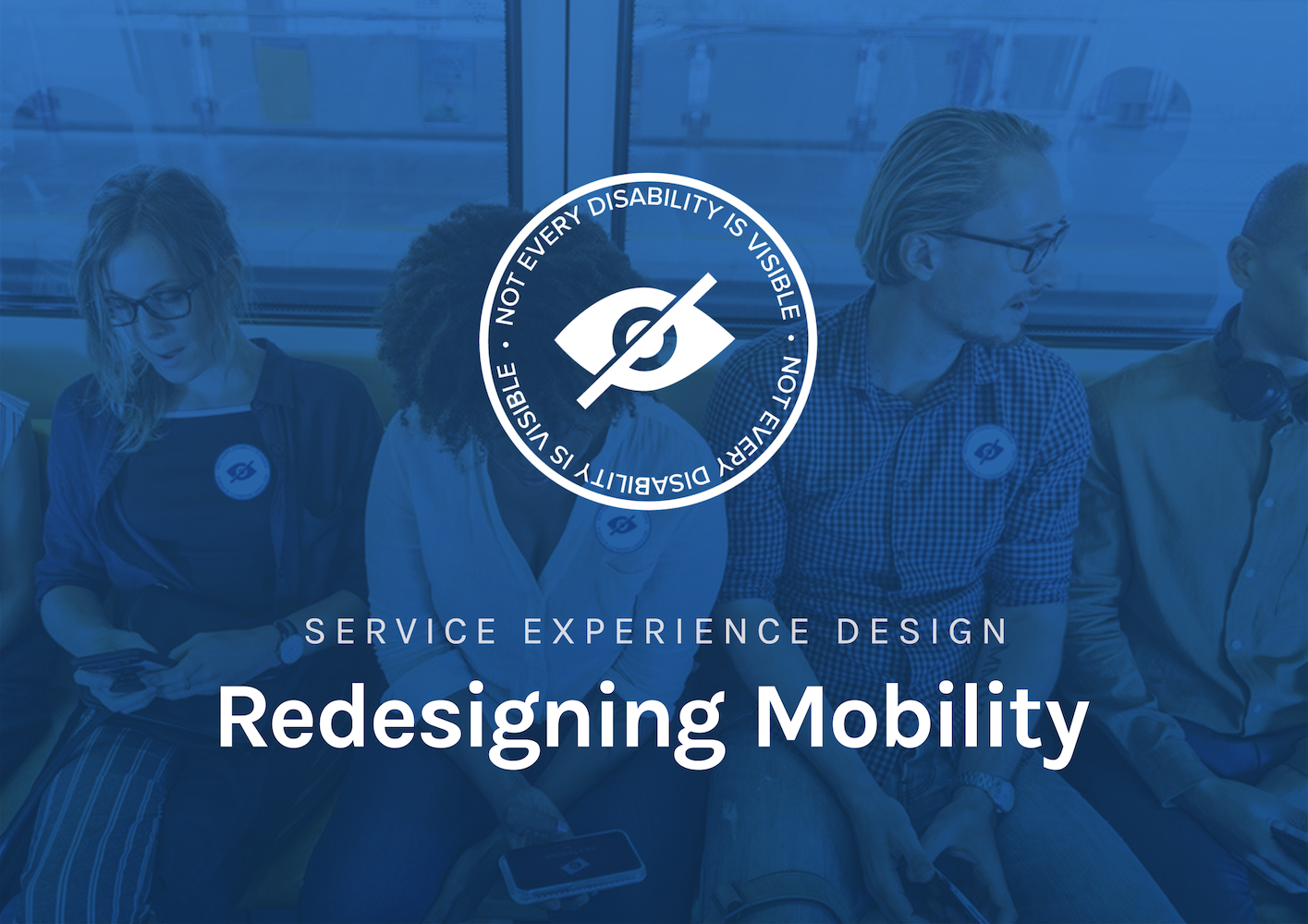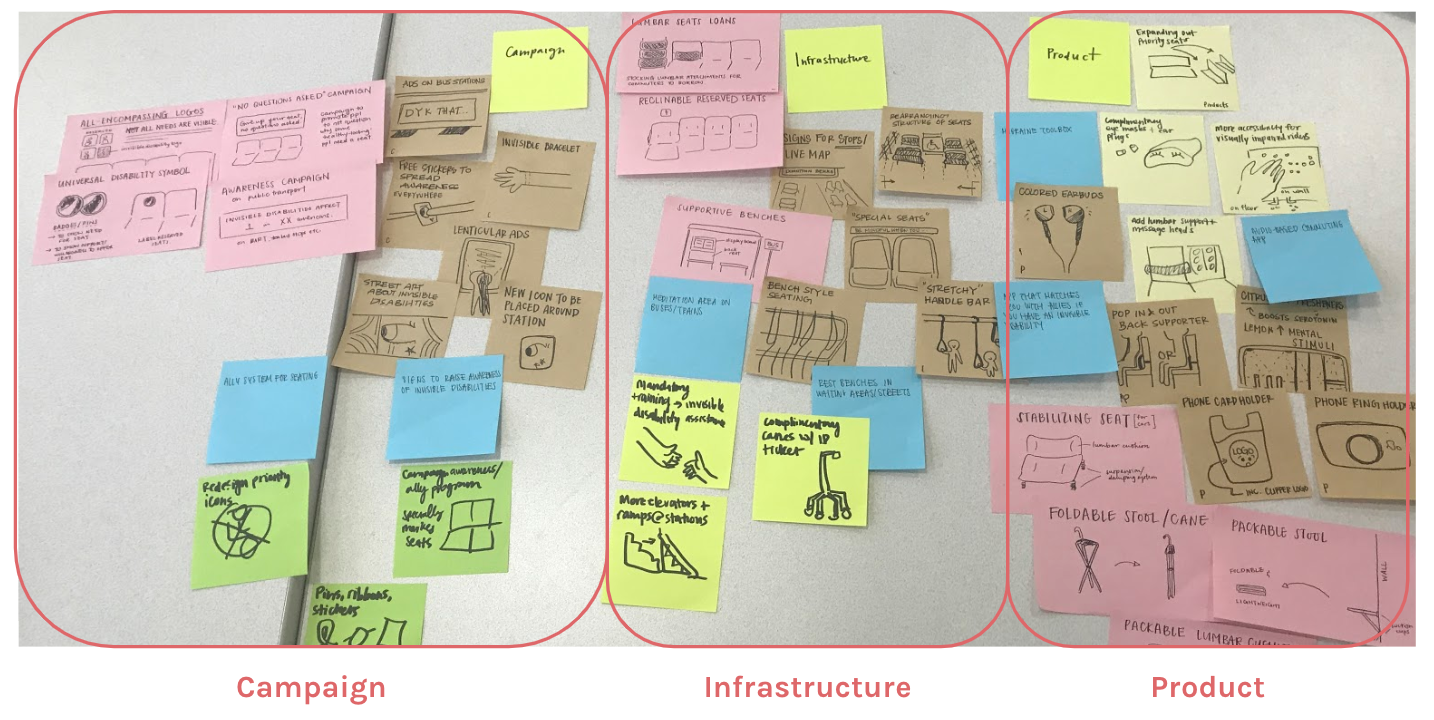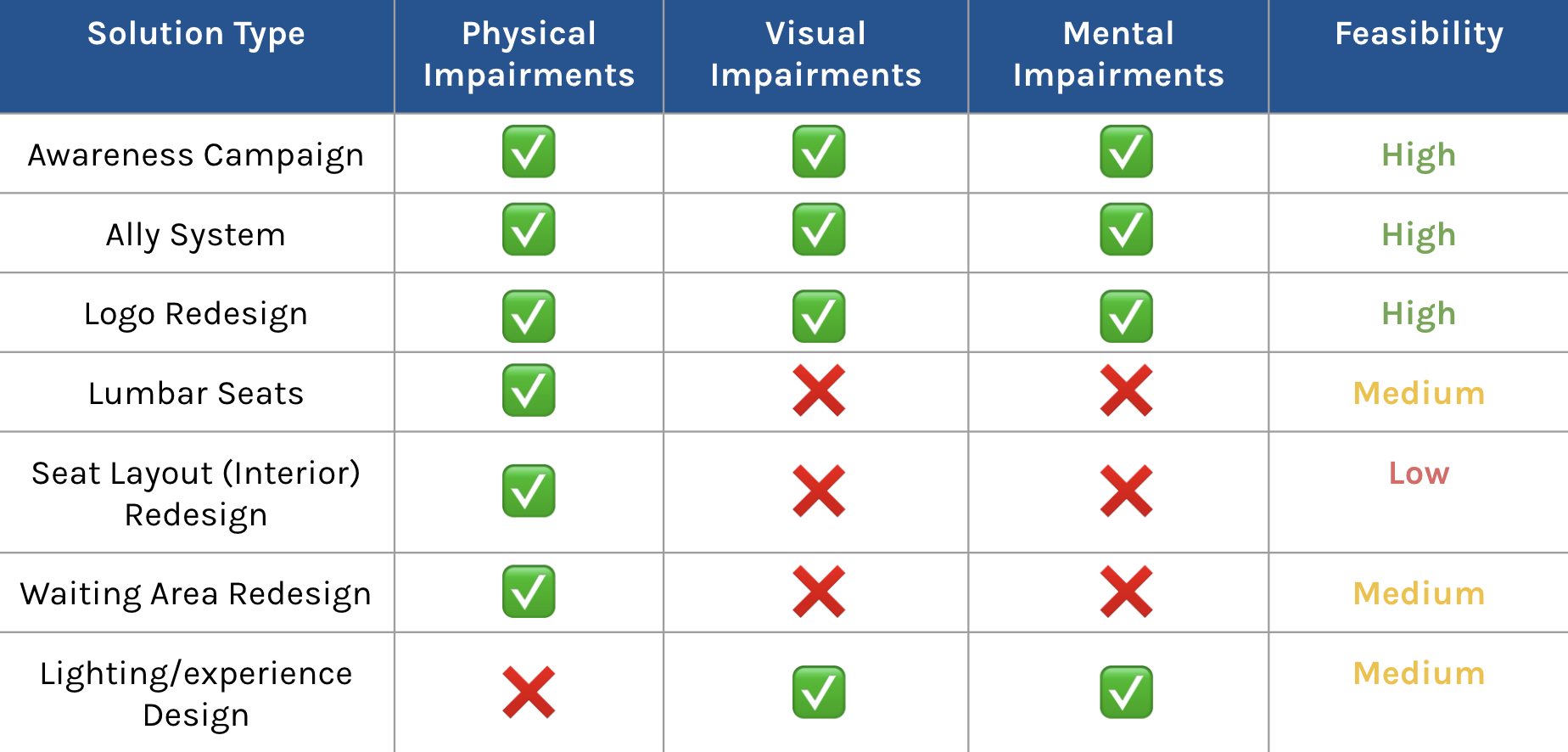
Context
For a class jointly held by UC Berkeley's Jacobs School of Design Innovation and Ford Motors, our team of four worked on a project that started with the prompt: How might we reimagine mobility?
As a team, we brainstormed on some common or possible pain points that commuters in the Bay Area often faced with. We were especially interested in how marginalised groups relied on a transportation system that might not quite cater to their needs. In particular, we discovered that there was a dearth of accessibility solutions for individuals with invisible disabilities - i.e., disabilities that are not immediately apparent, yet significantly impair normal activities of daily living.
User Research
To kick off the project, we embarked on user resarch with the following objectives:
- Identify the various types of invisible disabilities
- Understand how these disabilities affect individuals’ commuting experiences on public transport

We used a dual-pronged approach to conduct our primary research: a quantitative survey sent out to 100+ individuals with invisible disabilities, and follow-up user interviews which helped us gain deeper insights into the commuting experience with invisible disabilities. To supplement our findings, we also conducted secondary research on the types of disabilities and the way they impair everyday function.
Insight Synthesis
After conducting our research, we came together as a team to organise our findings. We used a shared Trello board for affinity mapping and spreadsheets to chart out relevant statistics.

Our key findings were:
- There are >50 unique forms of invisible disabilities, none of which were depicted in traditional priority seating or accessibility signages.
- Individuals' main concern was the lack of awareness of such conditions, leading to frequent misunderstandings when they need to use priority seating or accessibility infrastructure.
- Due to the difficulty in commuting with an invisible disability, many had affected social lives and livelihoods. In extreme cases, this has led to joblessness, homelessness and mental conditions.
Brainstorming Solutions
With these takeaways in mind, we held a team brainstorming session on possible solutions to address the key issues. We ideated for different types of impairments and sorted our solution ideas into three main categories: campaign, infrastructure, and product.

Campaign solutions targeted the lack of awareness among the general public about the difficulties of commuting with invisible disabilities.
Infrastructure solutions revolved around partnerships with public transit agencies to implement policy changes or to modify the physical environment of trains, buses and stations to cater to invisible disabilities.
Product solutions explored handheld ideas that could be distributed to commuters for personal use. These were based on specific requests from our survey that addressed physical and emotional comfort.
Solution Prioritisation

We ranked our top ideas based on what would have the greatest impact based on our key findings and what was the most realistic considering the project constraints. Our final solution combined the top three ideas - an awareness campaign promoting an accessibility logo redesign and ally system.
The Final Campaign
For our final concept, we redesigned a logo with the tagline “Not every disability is visible” and an easily recognisable iconography to be added to accessibility signages in public spaces. The logo change is accompanied by an awareness campaign to educate the public on invisible disabilities.
The same logo was also made into badges, stickers and buttons that can be used by allies to signal their willingness to provide judgment-free assistance with individuals with invisible disabilities. The individuals themselves could also choose to use these badges to indicate their needs.
Through an invisible disabilities campaign, we hope to create a new culture on public transit with an ally system promoting more understanding towards the needs of individuals with invisible disabilities.


